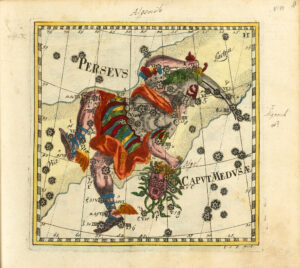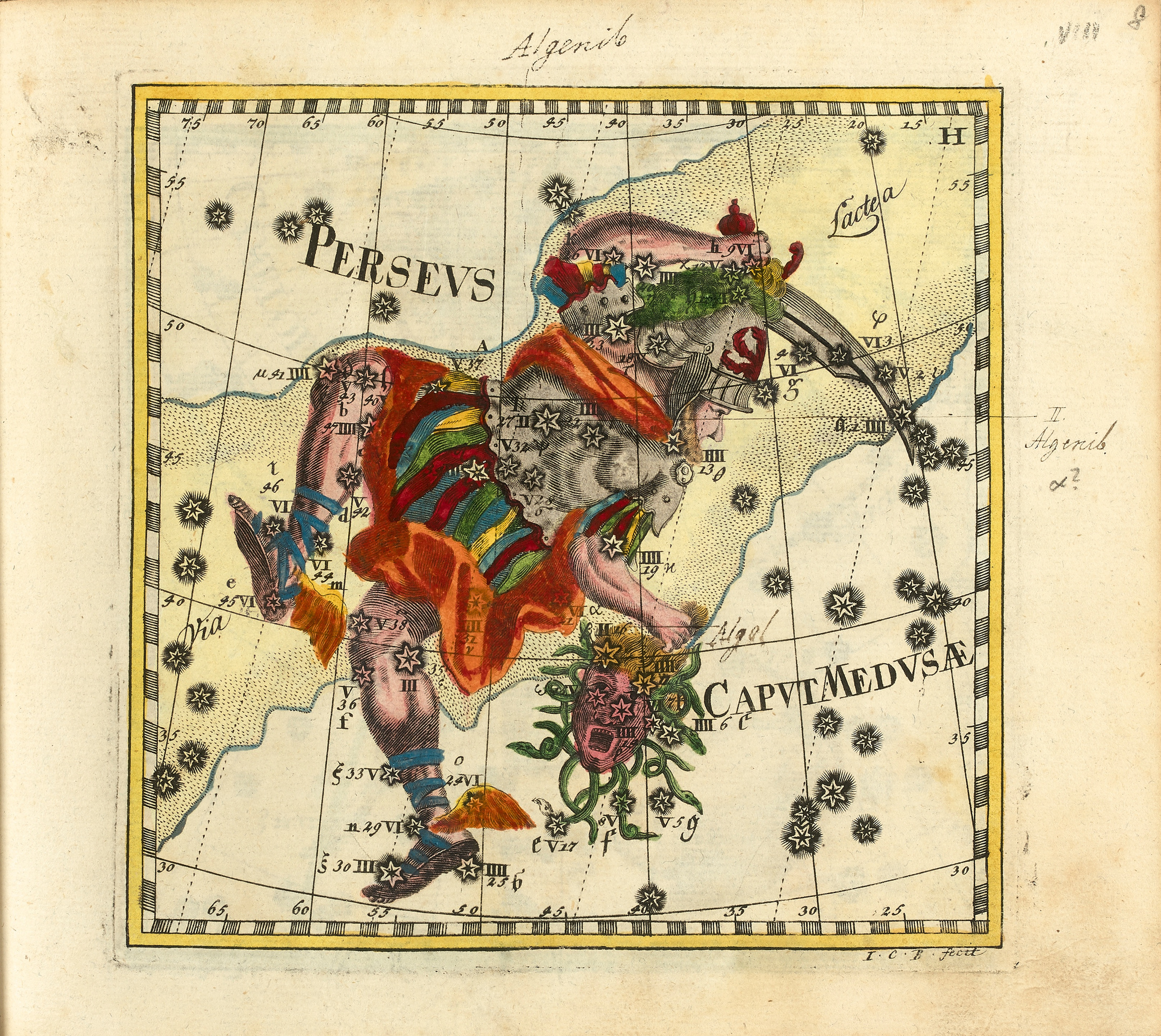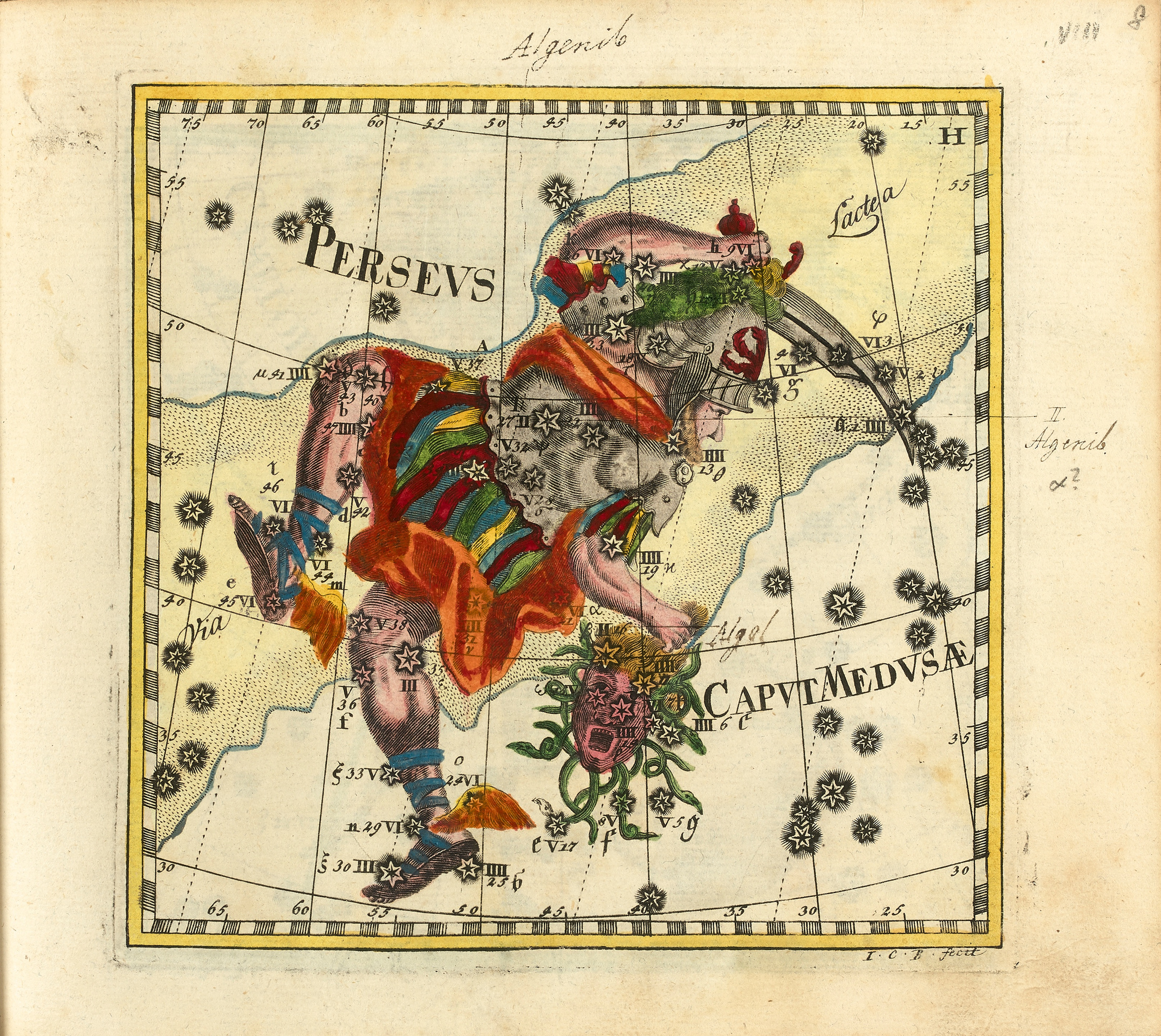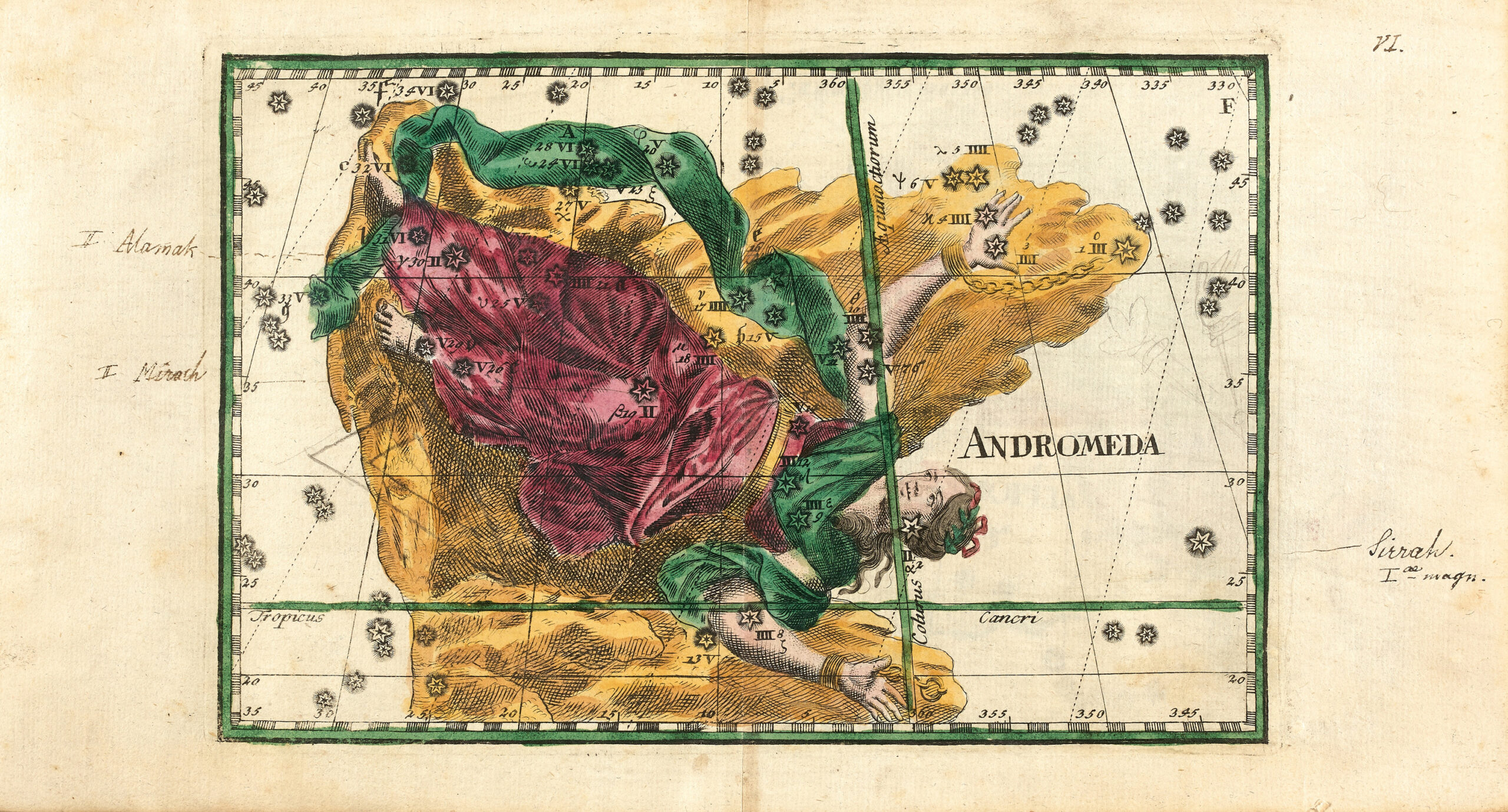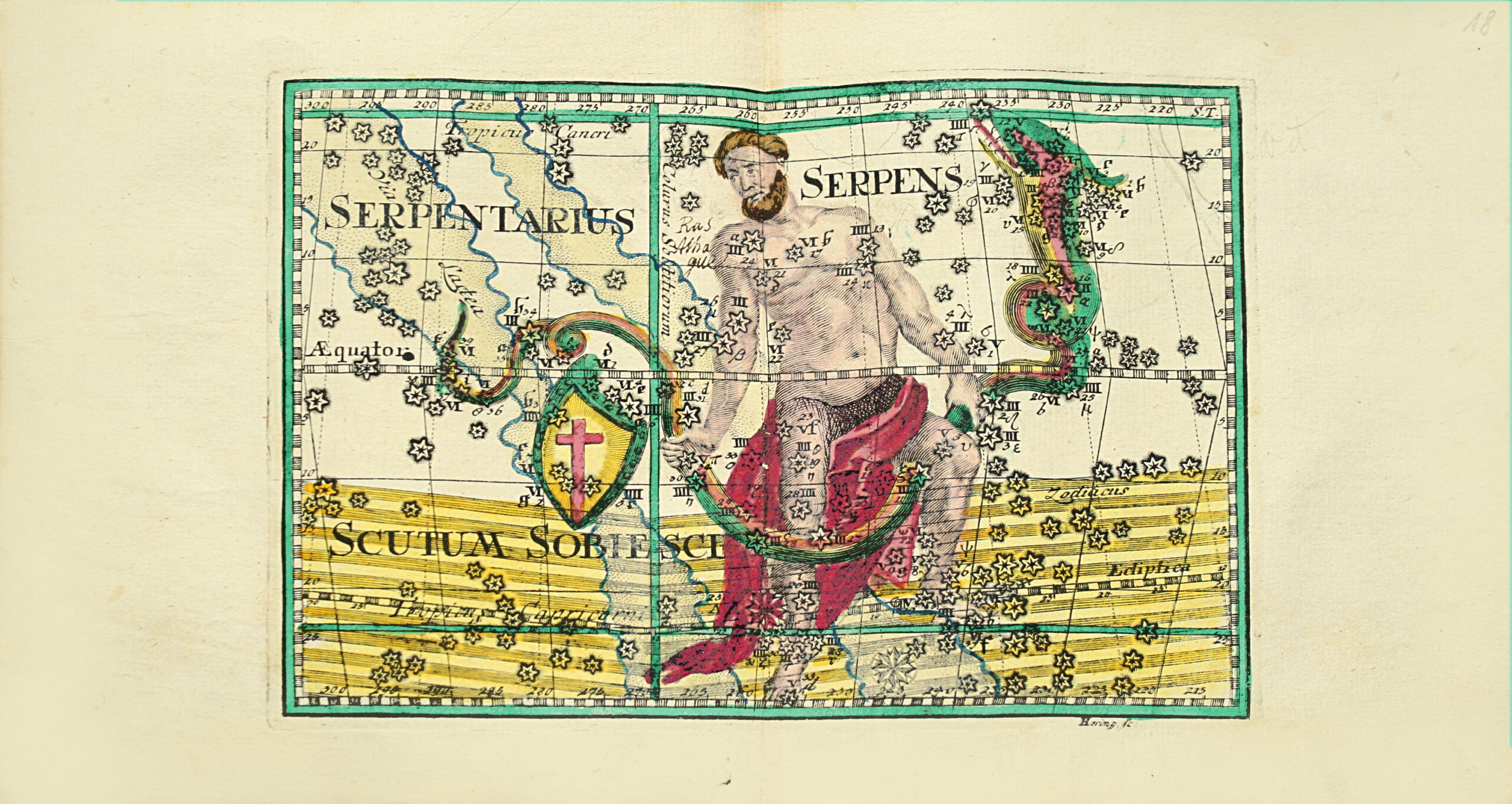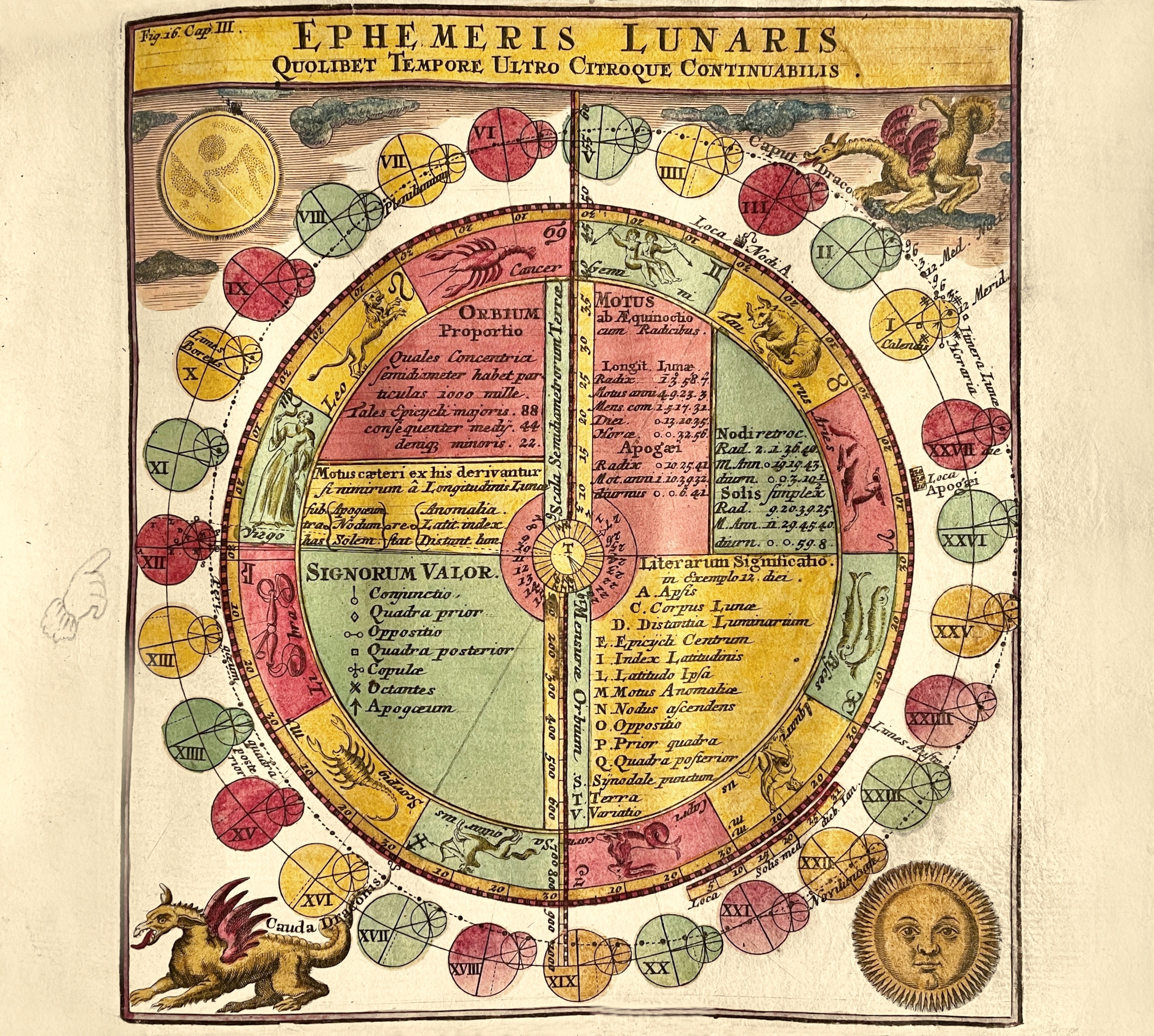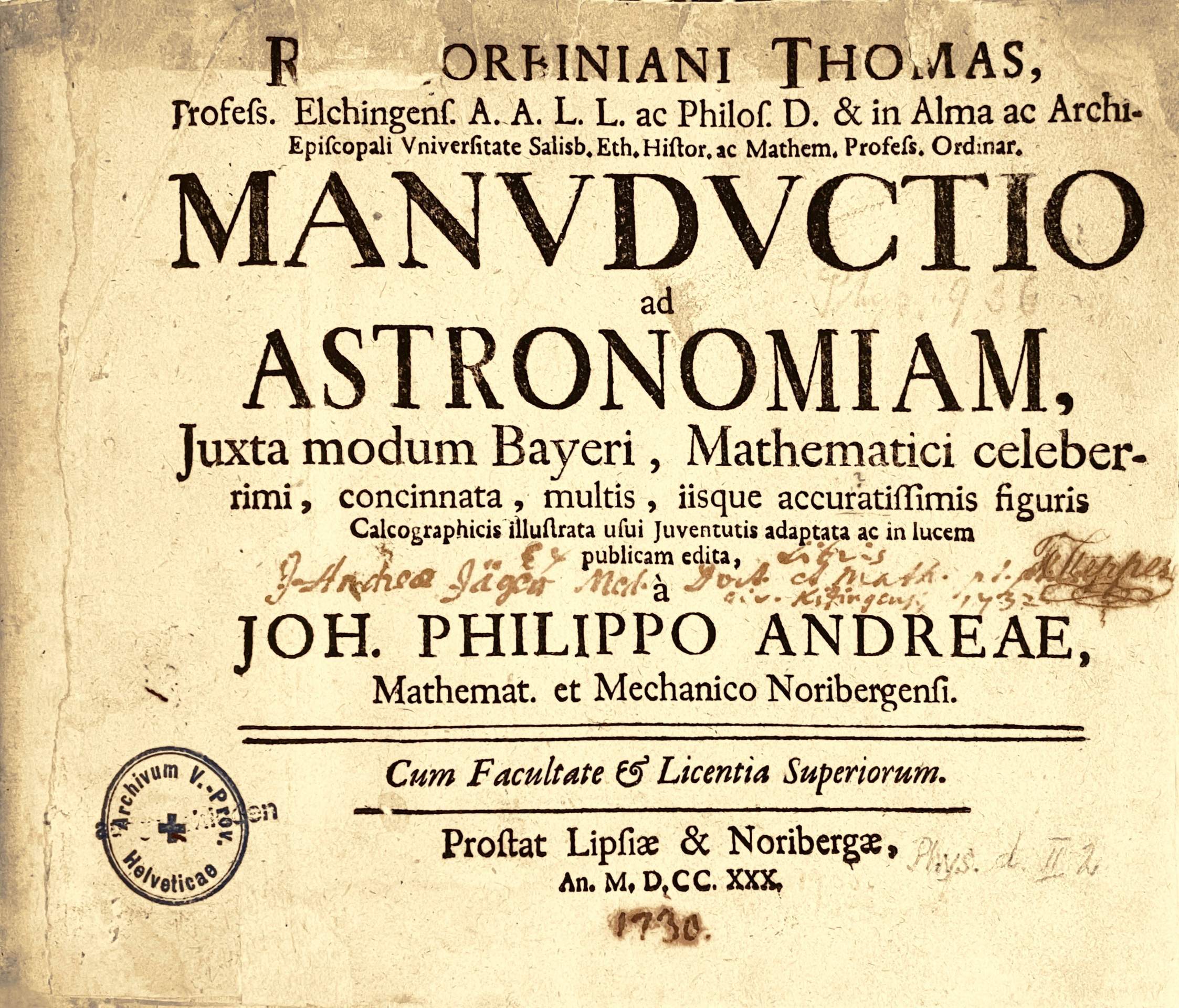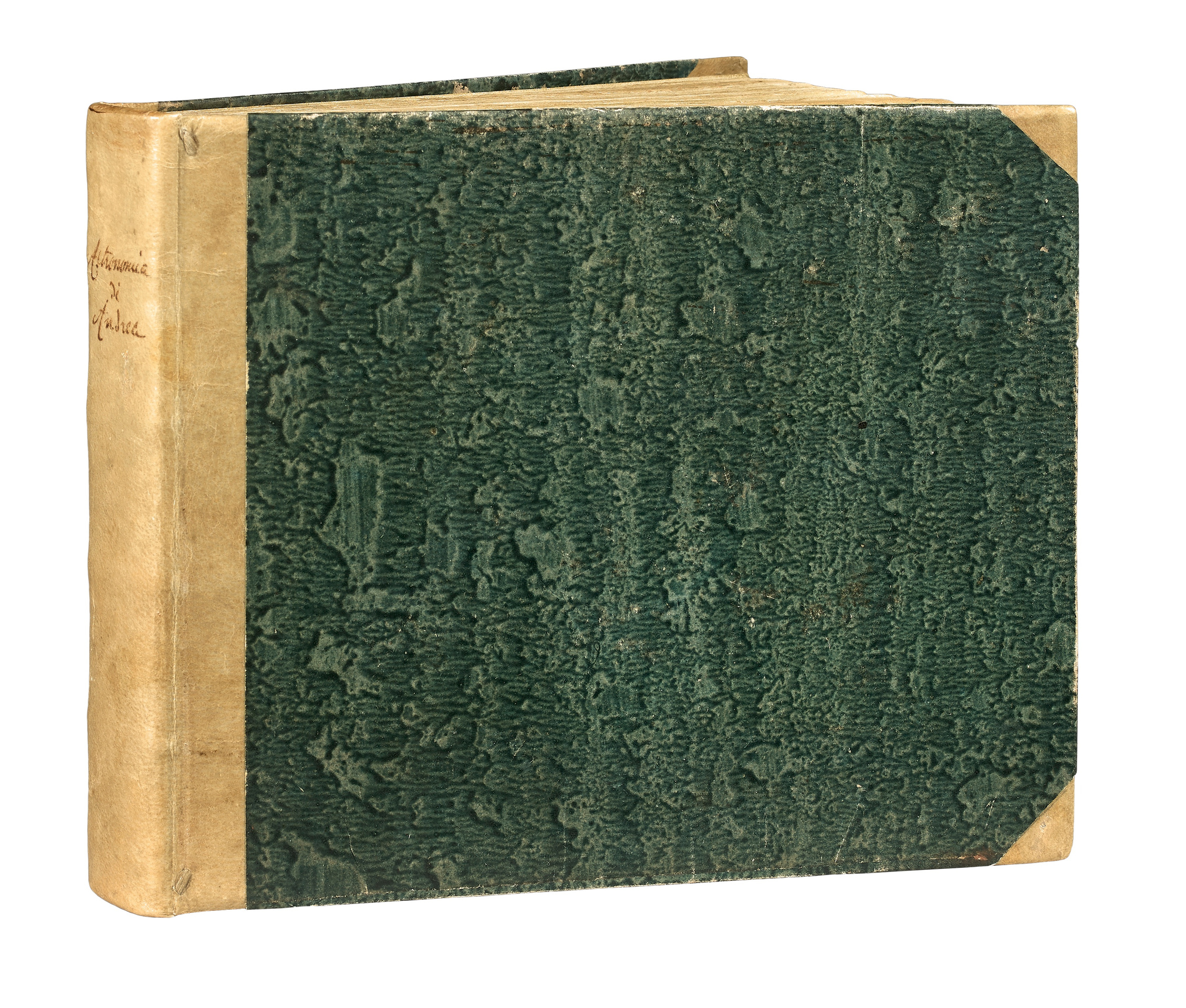Leipzig & Nuremberg, 1730.
Small oblong 4to [195 x 156 mm] of (1) l. of title, 212 pp. and 83 plates out of pagination.
The engraved frontispiece and/or an engraved folding table probably missing. Title lêf mounted with loss of paper and a little text in the upper half. First lêves crêsed, one têr taped. Some ll. with damage to the margins. Few marginalia in the margins, owner´s note on title, stamp on title and margin. Some browning, stains and waterstains. Appr. 35 tables in front with hw. explanations in the margins and the image, appr. 20 plates with additional drawings in the image in ink or pencil. Modern half-vellum, blue hard paper covers, title on the spine.
The very rare celestial atlas of Corbinianus Thomas which includes a trêtise on astronomy and an explanation on the use of globes in astronomy.
Poggend. II, 1096 u. ; Honeyman 2975; Not in Houzêu/L.
Another version of this work was published simultaneously under the title Mercurii Philosophici firmamentum firmianum descriptionem et usum globi artificialis coelestis.
Little is known about Corbinianus Thomas, a Benedictine monk and professor of Mathematics at Salzburg, but his atlas is one of the unsung trêsures of celestial cartography. It contains modestly-sized etchings of individual constellations, but the small plates exude considerable charm.
The plate of Andromeda is the most successful, with the billowy Baroque drapery interacting dramatically with the differently shaded rock behind. Some of his other constellation figures are also quite unusual. His Capricorn is severely truncated, indicating in a striking visual fashion that Capricorn is sandwiched in the sky between Sagitarius and Aquarius. Thomas also banded the region of the zodiac, which is quite an improvement over the uniform darkening of Bayer.
Thomas was one of the first celestial cartographers to devote a separate plate to Camelopardalis, a constellation that first appêred on globes around 1600, but which usually in star atlases had to share billing with Cepheus or Cassiopeia. And Thomas was the first cartographer to provide individual plates for some of the southern constellations, such as Indus and Pavo which customarily were shown only as a small part of a single plate or planisphere centered on the south celestial pole.
As we see in a detail of Andromeda on the right, Thomas used an interesting nomenclature system: Bayer Greek letter, Roman numeral for magnitude, and Arabic numeral for reference to a star catalog. This system originated on the large globes of Coronelli, as indeed did many of Thomas’s figures.
Thomas did invent one new constellation of his own, Corona Firmiana, to honor his patron, the archbishop of Salzburg, but it was never used again. Nor, alas, was most of the rest of Thomas’ charming atlas.
The constellation of Corona Firmiana only appêrs in the atlas of the Benedictine monk Thomas Corbinianus, were it simply replaces the Corona Borêlis.
This book is illustrated with 83 full-page copper engravings presenting the constellations, the hemispheres, or more technical figures dedicated to the use of globes in astronomy.
A precious copy of this rare celestial atlas, with its 83 plates entirely hand-colored at the time in particularly vivid shades.
Thanks to our resêrch, we have located only 2 copies of this very rare celestial atlas among worldwide Institutions: Berlin State Library and Library of the University of Eichstätt.
